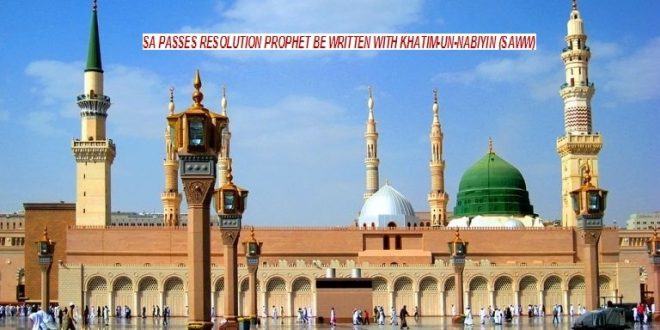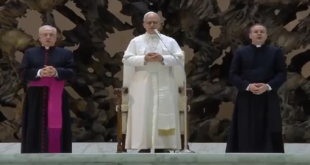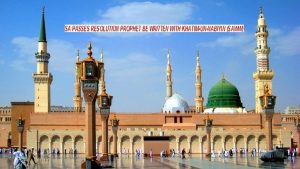 KARACHI: The Sindh Assembly (SA) unanimously passed a resolution seeking to make it mandatory to write Khatam-un-Nabiyyin with the Holy Prophet Hazrat Muhammad (PBUH) on Monday.
KARACHI: The Sindh Assembly (SA) unanimously passed a resolution seeking to make it mandatory to write Khatam-un-Nabiyyin with the Holy Prophet Hazrat Muhammad (PBUH) on Monday.
Muhammad Hussain of the MQM-P presented the resolution. It demanded that it should be made mandatory to write Khatam-un-Nabiyyin with the Holy Prophet Hazrat Muhammad (PBUH).
The resolution says the Holy Prophet Hazrat Muhammad (PBUH) is the Last Prophet and it must be written and read Khatam-un-Nabiyyin with him.
Provincial Minister for Information Nasir Hussain Shah endorsed the resolution.
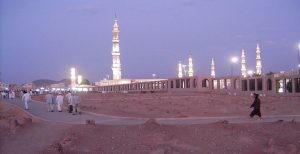 Meanwhile, the Sindh Assembly unanimously passed another resolution seeking construction of the shrine of Hazrat Fatima al-Zahra (Salam-ullah-e-Alaiha/ SA).
Meanwhile, the Sindh Assembly unanimously passed another resolution seeking construction of the shrine of Hazrat Fatima al-Zahra (Salam-ullah-e-Alaiha/ SA).
The resolution was presented by the representatives of all the parliamentary parties. It demanded that Pakistan should contact Saudi Arabia in this regard. “We are ready to pay the amount for the shrine if the construction faces a financial hurdle,” it said.
The resolution also demanded that diplomatic relations should be utilized for the construction of the shrine of Hazrat Fatima al-Zahra (SA) in Jannat-ul-Baqi (Madina).
The resolution was moved in the house by opposition legislator of Muttahida Quami Movement-Pakistan’s (MQM-P) Muhammad Hussain.
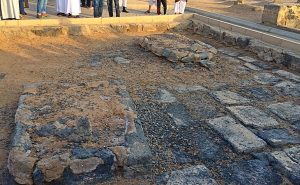 Speaking on the occasion, the mover of the resolution said that Prophethood had attained finality after Last Prophet Muhammad (SAWW) as it was necessary to issue a decree making it mandatory to write Khatam un-Nabiyeen wherever the name of Last Prophet (SAWW) is written.
Speaking on the occasion, the mover of the resolution said that Prophethood had attained finality after Last Prophet Muhammad (SAWW) as it was necessary to issue a decree making it mandatory to write Khatam un-Nabiyeen wherever the name of Last Prophet (SAWW) is written.
The resolution was initially moved in the house by Leader of Opposition in the house Firdous Shamim Naqvi belonging to Pakistan Tehreek-e-Insaf (PTI) as later on it was turned into a unanimous resolution having support of all the parliamentary parties in the house.
The resolution stated that Pakistan would bear all the expenses if in case there were financial issues hindering the construction of the holy shrine. It expresses dismay that the grave of Hazrat Fatima Al-Zahra (SA) was without any shelter in the holy land.
Sindh Information and Religious Affairs Minister Syed Nasir Hussain Shah said that the entire house supported the resolution.
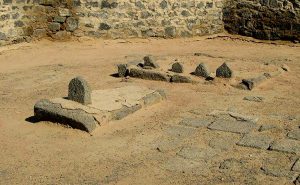 It is mentioned here that Jannat-ul-Baqi is the famous cemetery located right across the Masjid-al-Nabawi (The mosque of Prophet Muhammad Peace Be Upon Him/PBUH) in the Holy City of Madina, Kingdom of Saudi Arabia (KSA). Children, wives and immediate relatives of Prophet (PBUH) are buried in this cemetery. They are; Ibrahim (Alaihis-Salam/AS) – Son of Prophet Mohammad (PBUH), Fatima Zehra (Salamullah-e-Alaiha/SA) – Daughter of Prophet Mohammad (PBUH), Imam Hassan al Mujtaba (AS) – Grandson of Prophet Mohammad (PBUH), Imam Ali Ibnul Hussain (AS) – Great Grandson of Prophet Mohammad (PBUH), Imam Muhammad Baqar (AS) – Great Grandson of Prophet Mohammad (PBUH), Imam Jaffer Sadiq (AS) – Great Grandson of Prophet Mohammad (PBUH), Abbas Ibn Abd al-Muttalib (AS) – Uncle of Prophet Mohammad (PBUH) and many other family members, near and dear ones.
It is mentioned here that Jannat-ul-Baqi is the famous cemetery located right across the Masjid-al-Nabawi (The mosque of Prophet Muhammad Peace Be Upon Him/PBUH) in the Holy City of Madina, Kingdom of Saudi Arabia (KSA). Children, wives and immediate relatives of Prophet (PBUH) are buried in this cemetery. They are; Ibrahim (Alaihis-Salam/AS) – Son of Prophet Mohammad (PBUH), Fatima Zehra (Salamullah-e-Alaiha/SA) – Daughter of Prophet Mohammad (PBUH), Imam Hassan al Mujtaba (AS) – Grandson of Prophet Mohammad (PBUH), Imam Ali Ibnul Hussain (AS) – Great Grandson of Prophet Mohammad (PBUH), Imam Muhammad Baqar (AS) – Great Grandson of Prophet Mohammad (PBUH), Imam Jaffer Sadiq (AS) – Great Grandson of Prophet Mohammad (PBUH), Abbas Ibn Abd al-Muttalib (AS) – Uncle of Prophet Mohammad (PBUH) and many other family members, near and dear ones.
Jannat-ul-Baqi was razed to the ground by the government of Saudi Arabia leaving behind no signs of any grave or tomb.
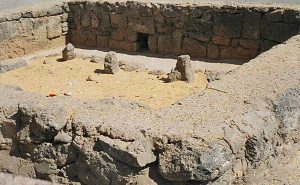 On 8th Shawwal, Wednesday, in the year 1345 AH (April 21, 1925), mausoleums in Jannatul-al-Baqi (Madina, Kingdom of Saudi Arabia/ KSA) were demolished by King Ibn Saud.
On 8th Shawwal, Wednesday, in the year 1345 AH (April 21, 1925), mausoleums in Jannatul-al-Baqi (Madina, Kingdom of Saudi Arabia/ KSA) were demolished by King Ibn Saud.
In the same year (1925), he also demolished the tombs of holy personages at Jannat al-Mualla (Makkah) where the Holy Prophet (s)’s mother, wife, grandfather and other ancestors are buried.
Destruction of sacred sites in Hijaz by the Saudi Wahhabis continues even today. According to some scholars what is happening in Hijaz is actually a conspiracy plotted by the Jews against Islam, under the guise of Tawheed. The idea is to eradicate the Islamic legacy and heritage and to systematically remove all its vestiges so that in the days to come, Muslims will have no affiliation with their religious history.
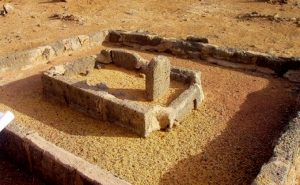 Furthermore, The Wahhabis believed that visiting the graves and the shrines of the Prophets, the Imams or the saints was a form of idolatry and totally un-Islamic. Those who did not conform with their belief were killed and their property was confiscated. Since their first invasion of Iraq, and till nowadays, in fact, the Wahhabis, as well as other rulers of the Gulf States, have been carrying out massacres from which no Muslim who disagreed with them was spared. Obviously, the rest of the Islamic World viewed those graves with deep reverence. Had it not been so, the two caliphs Abu Bakr and Umar would not have expressed their desire for burial near the grave of the Prophet (s).
Furthermore, The Wahhabis believed that visiting the graves and the shrines of the Prophets, the Imams or the saints was a form of idolatry and totally un-Islamic. Those who did not conform with their belief were killed and their property was confiscated. Since their first invasion of Iraq, and till nowadays, in fact, the Wahhabis, as well as other rulers of the Gulf States, have been carrying out massacres from which no Muslim who disagreed with them was spared. Obviously, the rest of the Islamic World viewed those graves with deep reverence. Had it not been so, the two caliphs Abu Bakr and Umar would not have expressed their desire for burial near the grave of the Prophet (s).
From 1205 AH to 1217 AH, the Wahhabis made several attempts to gain a foothold in Hijaz but failed. Finally, in 1217 AH, they somehow emerged victorious in Taif where they spilled the innocent blood of Muslims. In 1218 AH, they entered Makkah and destroyed all sacred places and domes there, including the one which served as a canopy over the well of Zamzam.
In 1221, the Wahhabis entered Madina to desecrate al-Baqi as well as every mosque they came across. An attempt was even made to demolish the Prophet’s tomb, but for one reason or another, the idea was abandoned. In subsequent years, Muslims from Iraq, Syria, and Egypt were refused entry into Makkah for Hajj. King Al-Saud set a pre-condition that those who wished to perform the pilgrimage would have to accept Wahhabism or else be branded as non-Muslims, becoming ineligible for entry into the Haram.
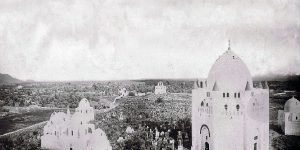 Al-Baqi was razed to the ground, with no sign of any grave or tomb whatsoever. But the Saudis were still not quite satisfied with doing all of that. Their king ordered three black attendants at the Prophet’s shrine to show him where the treasure of valuable gifts were stored. The Wahhabis plundered the treasure for their own use.
Al-Baqi was razed to the ground, with no sign of any grave or tomb whatsoever. But the Saudis were still not quite satisfied with doing all of that. Their king ordered three black attendants at the Prophet’s shrine to show him where the treasure of valuable gifts were stored. The Wahhabis plundered the treasure for their own use.
Thousands of Muslims fled Makkah and Madina in a bid to save their lives and escape from the mounting pressure and persecution at the hands of the Wahhabis. Muslims from all over the world denounced this Saudi savagery and exhorted the Caliphate of the Ottoman Empire to save the sacred shrines from total destruction. Then, as it is known, Muhammad Ali Basha attacked Hijaz and, with the support of local tribes, managed to restore law and order in Madina and Makkah, dislodging the Al-Saud clansmen. The entire Muslim world celebrated this victory with great fanfare and rejoicing. In Cairo, the celebrations continued for five days. No doubt, the joy was due to the fact that pilgrims were once more allowed freely to go for Hajj, and the sacred shrines were once again restored.
In 1818 AD, the Ottoman Caliph Abdul Majid and his successors, Caliphs Abdul Hamid and Mohammed, carried out the reconstruction of all sacred places, restoring the Islamic heritage at all important sites. In 1848 and 1860 AD, further renovations were made at the expense of nearly seven hundred thousand pounds, most of which came from the donations collected at the Prophet’s tomb.
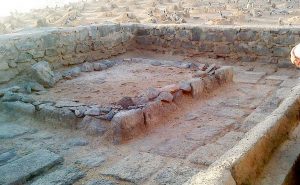 The Ottoman Empire had added to the splendour of Madina and Makkah by building religious structures of great beauty and architectural value. Richard Burton, who visited the holy shrines in 1853 AD disguised as an Afghan Muslim and adopting the Muslim name Abdullah, speaks of Madina boasting 55 mosques and holy shrines. Another English adventurer who visited Madina in 1877-1878 AD describes it as a small beautiful city resembling Istanbul. He writes about its white walls, golden slender minarets and green fields.
The Ottoman Empire had added to the splendour of Madina and Makkah by building religious structures of great beauty and architectural value. Richard Burton, who visited the holy shrines in 1853 AD disguised as an Afghan Muslim and adopting the Muslim name Abdullah, speaks of Madina boasting 55 mosques and holy shrines. Another English adventurer who visited Madina in 1877-1878 AD describes it as a small beautiful city resembling Istanbul. He writes about its white walls, golden slender minarets and green fields.
1924 AD Wahhabis entered Hijaz for a second time and carried out another merciless plunder and massacre. People in the streets were killed. Houses were razed to the ground. Women and children too were not spared.
Awn bin Hashim (Sharif of Makkah) writes: “Before me, a valley appeared to have been paved with corpses, dried blood staining everywhere all around. There was hardly a tree which didn’t have one or two dead bodies near its roots.”
1925 Madina surrendered to the Wahhabi onslaught. All Islamic heritage were destroyed. The only shrine that remained intact was that of the Holy Prophet (s).
Ibn Jabhan says: “We know that the tomb standing on the Prophet’s grave is against our principles, and to have his grave in a mosque is an abominable sin.”
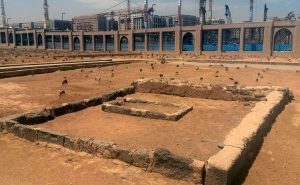 Tombs of Hamza and other martyrs were demolished at Uhud. The Prophet’s mosque was bombarded. On protest by Muslims, assurances were given by Ibn Saud that it will be restored but the promise was never fulfilled. A promise was given that Hijaz will have an Islamic multinational government. This was also abandoned.
Tombs of Hamza and other martyrs were demolished at Uhud. The Prophet’s mosque was bombarded. On protest by Muslims, assurances were given by Ibn Saud that it will be restored but the promise was never fulfilled. A promise was given that Hijaz will have an Islamic multinational government. This was also abandoned.
1925 AD Jannat al-Mu’alla, the sacred cemetery at Makkah was destroyed along with the house where the Holy Prophet (s) was born. Since then, this day is a day of mourning for all Muslims.
Is it not strange that the Wahhabis find it offensive to have the tombs, shrines and other places of importance preserved, while the remains of their Saudi kings are being guarded at the expense of millions of dollars?
It is also mentioned here for our readers’ record and information that a partial list of the demolished graves and shrines include; Al-Mualla graveyard in Makkah which includes the grave of Sayyida Khadija bint Khuwailid (AS), wife of the Prophet (s), the grave of Amina bint Wahab, mother of the Prophet (s), the grave of Abu Talib, father of Imam Ali (AS), and the grave of Abdul Muttalib, grandfather of the Prophet (SAWW)
The Grave of Hawa (Eve) in Jeddah
The Grave of the father of the Prophet (s) in Madina
The house of sorrows (Bayt al-Ahzan) of Sayyida Fatima (AS) in Madina
The Salman al-Farsi (AS) mosque in Madina
The Raj’at ash-Shams mosque in Madina
The house of the Prophet (s) in Madina, where he lived after migrating from Makkah
The house of Imam Jaffar al-Sadiq (AS) in Madina
The complex (mahalla) of Banu Hashim in Madina
The house of Imam Ali (a) where Imam Hassan (AS) and Imam Husayn (a) were born
The house of Hamza and the graves of the martyrs of Uhud (AS).
Sindh Information Minister Syed Nasir Hussain Shah presented another resolution in the house, which also unanimously passed by the house to pay tribute to late renowned journalist, academic, and scholar Prof Waris Mir.
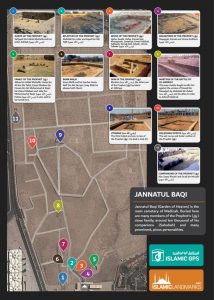 The resolution states that Prof Waris Mir had been subjected to hardships by the followers of the autocratic regime in the country as he continued his struggle despite use of oppressive tactics against him.
The resolution states that Prof Waris Mir had been subjected to hardships by the followers of the autocratic regime in the country as he continued his struggle despite use of oppressive tactics against him.
It stated that the trend of terming people traitors by the state should come to an end. The resolution reiterates resolve of the Sindh Assembly to defend the cause of freedom of journalism and also condemns any attempt to supress the freedom of expression.
The resolution says that name of an underpass in Lahore named after Prof Waris Mir has been changed as it should again be named after the late academic and journalist.
Speaking on the occasion Sindh CM Murad Ali Shah said that he fully supported the noble act of speaking truth and becoming the rightful voice in the face of oppression.
He said that such resolutions should be brought to the house to pay tribute to the people who had remained steadfast against oppression, always spoken truth, and also never bowed before dictators.
 Pressmediaofindia
Pressmediaofindia
